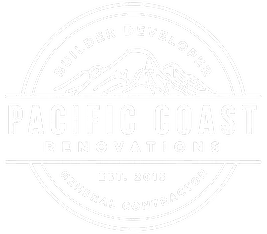Kitchen Remodel Guide
The Ultimate Kitchen Remodel Guide for Homeowners
Remodeling your kitchen is one of the most rewarding—and most valuable—projects you can undertake as a homeowner. Whether you’re aiming to refresh a dated space or completely gut and rebuild your layout, a well-planned kitchen remodel improves not only your day-to-day lifestyle but also your home’s long-term value.
In this guide, we’ll walk you through everything you need to know about remodeling your kitchen, from layout and design to material choices, lighting, remodeling tips, and where to find inspiration. Whether you’re in the early planning stage or ready to dive in, this comprehensive resource is built to support your vision.
Step 1: Planning Your Kitchen Layout
Common Kitchen Layout Options:
1. L-Shaped Kitchen:
This design uses two adjacent walls to form an “L” and opens up the rest of the space. Ideal for open-concept homes or smaller kitchens, it provides good counter space and allows for an optional island.
2. U-Shaped Kitchen:
Surrounded on three sides by counters and cabinets, this layout is perfect for those who love to cook. It offers plenty of prep space and storage, but can feel closed in if not well-lit or if upper cabinets dominate the space.
3. Galley Kitchen:
Long and narrow with counters on either side, galley kitchens are very efficient for cooking but may feel tight. If possible, widening walkways or removing a non-load-bearing wall can help improve flow.
4. Open-Concept Kitchen:
This modern layout removes barriers between the kitchen, dining, and living areas, encouraging social interaction. It's great for entertaining but requires strategic zoning to define areas.
5. Kitchen with Island:
Islands offer additional workspace, seating, and storage. In larger kitchens, a center island becomes a focal point and a hub for food prep and conversation.
6. Layout Tip:
Always consider the kitchen work triangle—the invisible line between the sink, stove, and fridge. Keeping this triangle compact and unobstructed ensures maximum efficiency.
Step 2: Choosing the Right Kitchen Design Style
Top Kitchen Design Styles:
1. Modern:
Clean lines, handle-less cabinets, neutral colors, and smart appliances dominate modern kitchens. Glossy finishes, slab cabinets, and integrated lighting add to the sleek look.
2. Farmhouse:
Featuring rustic elements like apron-front sinks, exposed wood beams, shaker cabinets, and soft color palettes, farmhouse kitchens are warm and welcoming.
3, Transitional:
A blend of modern and traditional elements, transitional kitchens combine classic cabinet styles with contemporary materials, offering timeless appeal with modern functionality.
4. Industrial:
Raw materials like metal, brick, and concrete make industrial kitchens unique. Open shelving, stainless steel appliances, and matte finishes round out the style.
5. Scandinavian:
Minimalist yet cozy, Scandinavian design uses lots of white, natural light, and organic textures like wood, wool, and tile for a light and airy kitchen environment.
6. Style Planning Tip:
When in doubt, start by picking a cabinet style and finish that speaks to you. Then layer in complementary materials like countertops, flooring, and hardware.
Step 3: Choosing Durable, Stylish Kitchen Materials
Cabinets:
1. Custom Cabinets:
Built specifically for your space, they offer maximum flexibility in style, finish, and storage configuration.
2. Semi-Custom Cabinets:
A great middle ground, semi-custom options allow for certain modifications and style upgrades at a lower price point.
3. Stock Cabinets:
Budget-friendly and ready-made, stock cabinets are best for standard-sized kitchens and fast timelines.
4. Feature to Look For
Soft-close hinges, pull-out shelves, hidden drawers, and vertical dividers increase efficiency and lifespan.
Countertops:
1. Quartz:
Non-porous, durable, and low-maintenance, quartz is available in a wide range of colors and patterns and doesn’t need sealing.
2. Granite:
Natural and unique, granite is heat- and scratch-resistant but requires regular sealing to prevent stains.
3. Butcher Block:
Wood counters add warmth and texture, though they’re more prone to scratches and need frequent oiling to stay protected.
4. Laminate:
A cost-effective option that has come a long way in style and realism. Great for secondary surfaces or budget-conscious remodels.
Flooring:
1. Luxury Vinyl Plank (LVP):
Waterproof, stylish, and highly durable, LVP is a favorite for active homes.
2. Tile:
From porcelain to ceramic, tile is moisture-resistant and comes in countless styles. Hard underfoot, but very resilient.
3. Hardwood:
Offers unmatched warmth and character but is more sensitive to water and scratches than synthetic options.
4. Pro Tip:
Pick flooring that works with your lifestyle first, then your design second. Families with pets or kids often benefit from durable, easy-clean surfaces.
Step 4: Lighting Your Kitchen Like a Pro
Key Lighting Types to Include:
1. Ambient Lighting:
This is your main source of light—typically ceiling-mounted fixtures, recessed cans, or a combination of both. Think of it as your kitchen’s base layer.
2. Task Lighting:
Focused lighting that illuminates key areas like countertops, sinks, and stovetops. Under-cabinet lighting and pendant lights are common task solutions.
3. Accent Lighting:
Used to create mood and highlight design features like open shelving, glass cabinets, or a tile backsplash.
4. Natural Light:
If you’re redesigning your layout, consider adding larger windows, transoms, or even skylights. Natural light reduces energy use and makes the space feel bigger and more inviting.
5. Lighting Tip:
Use dimmer switches to customize lighting throughout the day. Brighter light for prep, softer light for dinners or entertaining.
Finding Kitchen Remodel Inspiration Online
Recommended Sites for Kitchen Design Inspiration:
1. Houzz
Explore thousands of real kitchen remodel projects, save ideas to Ideabooks, and browse by style, layout, or color.
2. Pinterest
A go-to platform for mood boards. Search for “kitchen remodel ideas” or “cabinet inspiration” and save pins to organize your preferences.
3. Instagram – #kitchenremodel
Check out remodels in real homes and follow designers or local contractors for before-and-after photos and layout solutions.
4. HGTV Kitchen Remodeling
A reliable source for trends, inspiration galleries, and how-to guides from the experts in home renovation.
5. Inspo Tip
As you collect images, note why you like each one—whether it's the backsplash tile, cabinet color, or overall layout. These details will help your designer or contractor better understand your vision.
Step 5: Kitchen Remodel Dos and Don’ts
DO: Establish a Clear Budget
Outline your ideal spend and max limit. Don’t forget to include a buffer for the unexpected, which often comes up during renovation (especially in older homes).
DON’T: Skip the Planning Phase
Design your kitchen on paper or in a 3D modeling tool before you start demo. Avoid mid-project changes—they’re the biggest cause of delays and cost overruns.
DO: Prioritize Storage and Function
Drawers over doors, deep pantry pull-outs, lazy susans, and toe-kick drawers can dramatically increase usable space.
DON’T: Focus Only on Aesthetics
Sure, it’s tempting to chase trends—but function should always come first. The most beautiful kitchen in the world won’t help if there’s nowhere to prep dinner or store groceries.
DO: Hire Professionals When Needed
Even if you’re a DIY pro, things like electrical, plumbing, and gas work often require permits and expert knowledge. A qualified contractor or licensed specialist ensures safety and compliance.
Remodeling your kitchen is a big decision—but when planned properly, it’s one of the most worthwhile investments you can make in your home. From enhancing daily use to increasing resale value, a well-designed kitchen remodel offers both personal and financial benefits.
The most important steps? Plan your layout intentionally, choose quality materials that suit your lifestyle, explore design inspiration, and think about how you’ll use the space every day—not just how it looks.
Follow Pacific Coast Renovations for in-depth guides on bathroom remodels, whole-home renovations, and design inspiration tailored for homeowners in Washington State and beyond.

